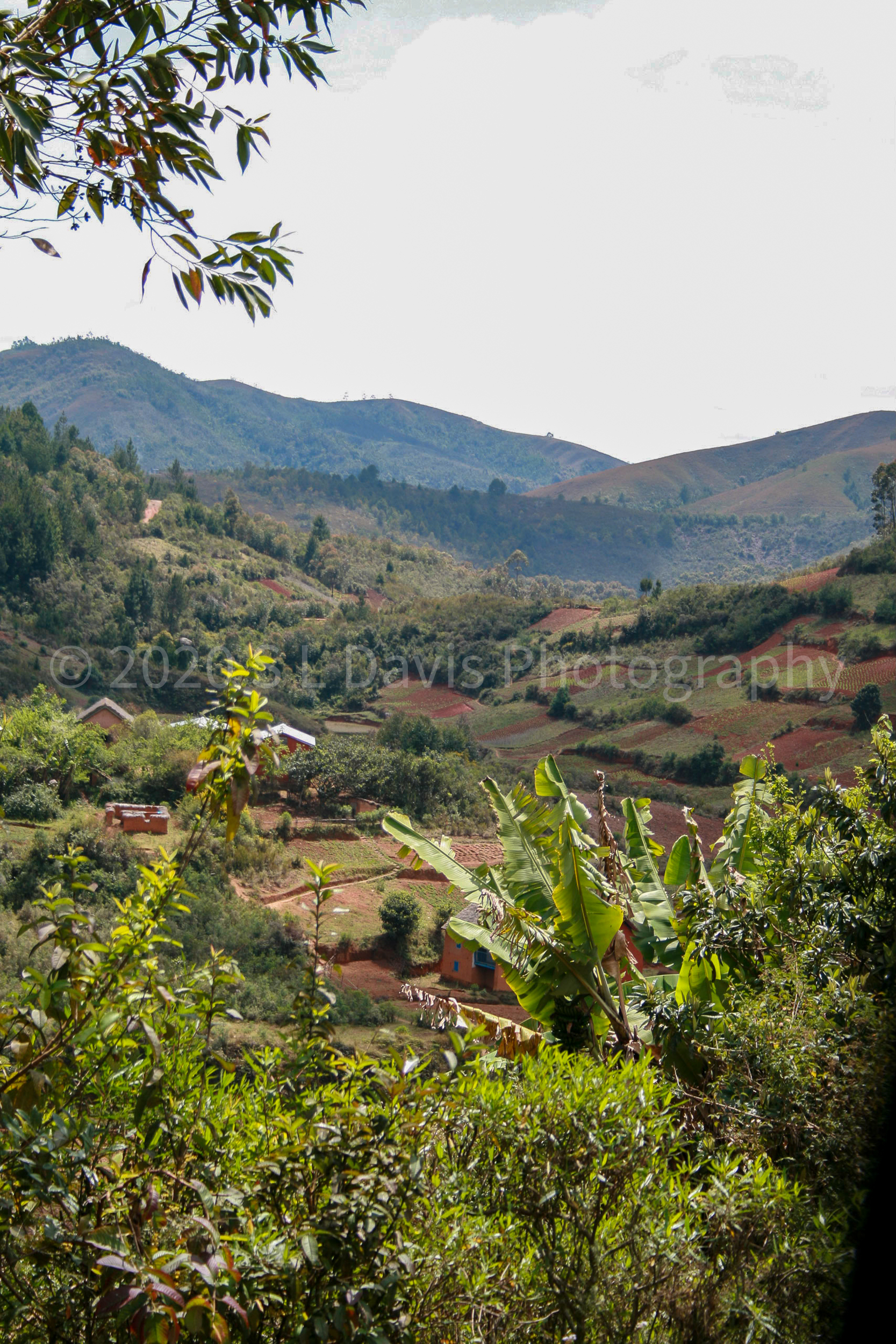
This conservation park is a real gem and I can honestly say, I may never have come into contact with so many species, if I hadn’t spotted the sign at the side of the road at the start of my trip as I was whizzed past.
As I continued to explore, I am introduced to a variety of different species. There are so many different species of amphibians and reptiles that are truly unique to Madagascar.
I now introduce you to the Tomato Frog and the Green Burrowing frog. Starting with the Tomato Frog, it will come as no surprise that the name of this frog derives from it’s colouring. This frog is toxic and secretes a thick substance from it’s skin which numbs up the predator’s eyes and mouth, this causes the predator to release the frog to free up its eyes. The toxins from the gummy substance occasionally causes allergic reactions in humans. The frog secretes it only when frightened. These frogs can live up to 8 years and the males are a yellow-orange and females a brighter, red-orange. The status of this species is Near Threatened and is the result of habitat degradation, pollution and the over-collection of these brightly coloured amphibians for the pet trade.
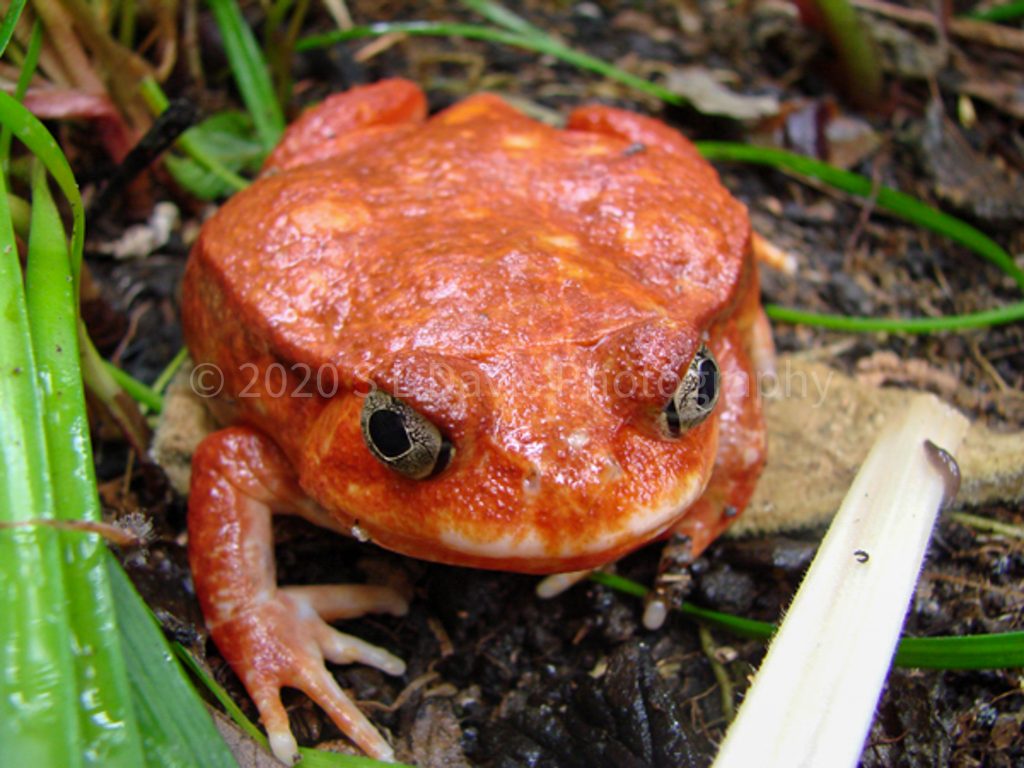
There are approximately 6 species of the Madagascan Green Burrowing frog, all are endemic to Madagascar. This species in vulnerable for the same reasons as every other species unfortunately. This frog prefers to be buried in dead leaves on the forest floor but when it emerges it will often climb onto the branches of bushes and small trees to catch insects.
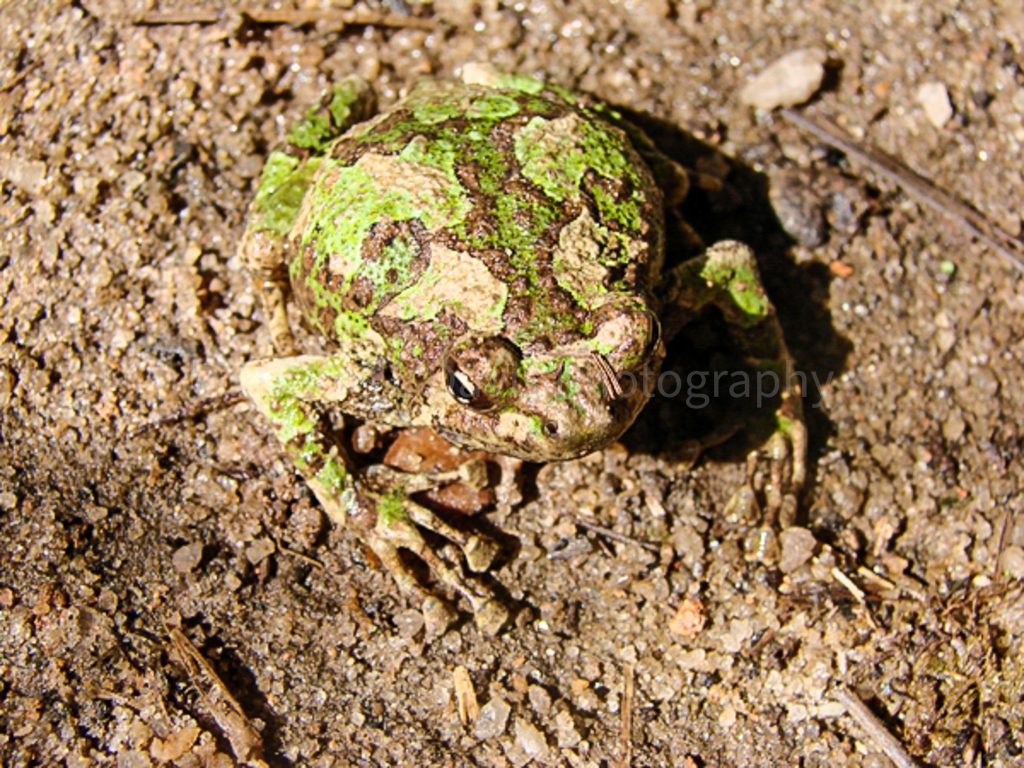
Very little is known of the breeding habits of this frog but it is believed to be an “explosive” breeder, with all the frogs in an area coming together at one time to mate and spawn in temporary pools at the beginning of the rainy season.
Next up, I have a variety of geckos and these are different species of leaf gecko which are also endemic to Madagascar and are the masters of disguise as well as looking a little freaky.
You will notice they have a marbling on the eyes, giving them a very eerie appearance, yet cleverly part of the overall camouflage. They are very gentle and thankfully not toxic to humans, hence I was able to handle them.
I was fortunate to handle 4 of the leaf gecko species, as well as multiple species of chameleon which, I will cover in due course. I have many close up photographs of various species, unfortunately there is only so much I can cover in blogs.
The first of the Leaf Gecko species is the Satanic leaf tailed gecko. These unique lizards are also known as the eyelash leaf-tailed gecko or the fantastic leaf-tailed gecko, the satanic leaf-tailed geckos generic name comes from the Latin words meaning “tail” and “flat.” Their specific name comes from the word “imaginary” since it has such a unique appearance.
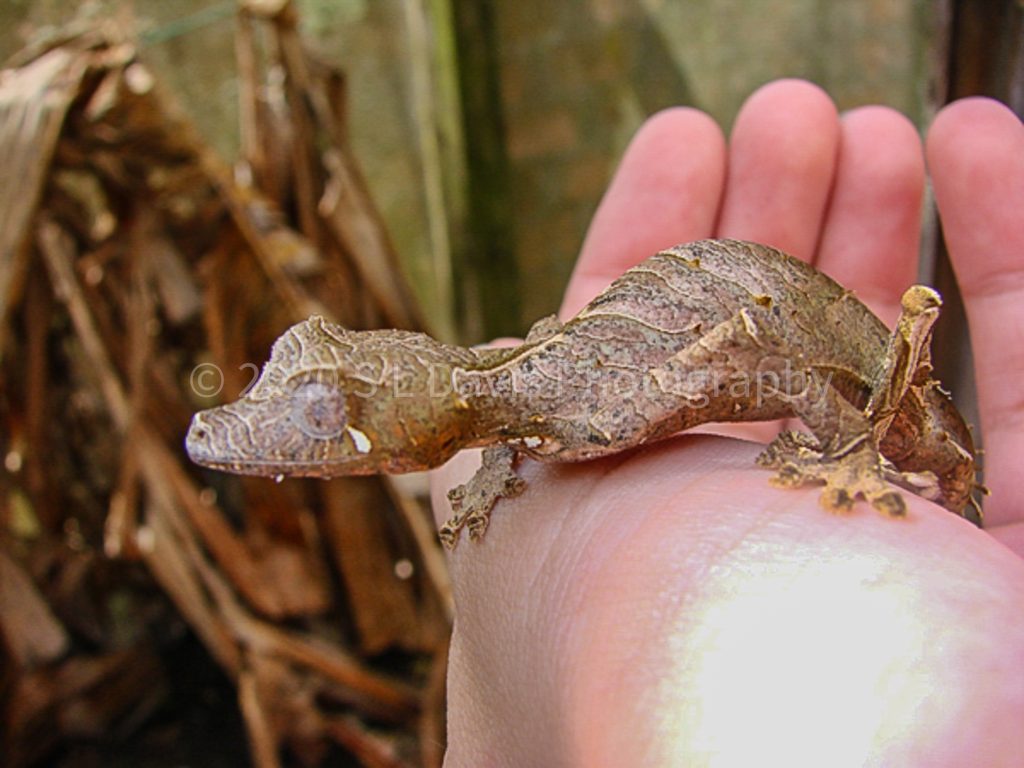
During the day, they use a variety of tactics to stay safe from predators such as eagles, snakes, and rats. Besides camouflage, they can also flatten their bodies to reduce their shadow, open their jaws wide to show their bright red mouths, or shed their tail and run away. If a tail is shed, like other reptiles that do this, it is a distraction tactic, whereby the tail continues to move due to the nerves, keeping it’s predator occupied.
These geckos live solely in trees, they have “sticky toes” which are made of millions of tiny plates, and they have curved claws for extra grip. These plates allow movement across smooth vertical surfaces like glass. If that doesn’t provide enough holding power, the satanic leaf-tailed gecko can also use its tail to wrap around branches. They are also pretty good at jumping too.
Satanic leaf-tailed geckos hunt during the night, feeding mostly on insects and occasionally small rodents and reptiles. Little is known about their diet in the wild, but in captivity, they eat anything they can overpower.
The next species is the Lined Leaf Tailed Gecko. These have huge unblinking eyes, strange chirps and barks. Its shape and colour make this gecko look like a strip of peeling bark. These geckos spend most of their time in trees, and camouflage is one of their best defences. These geckos live on trees in tropical rain forests and on bamboo plants. Not too much is known about these fascinating geckos unfortunately but they are said to be one of the largest of the gecko species.
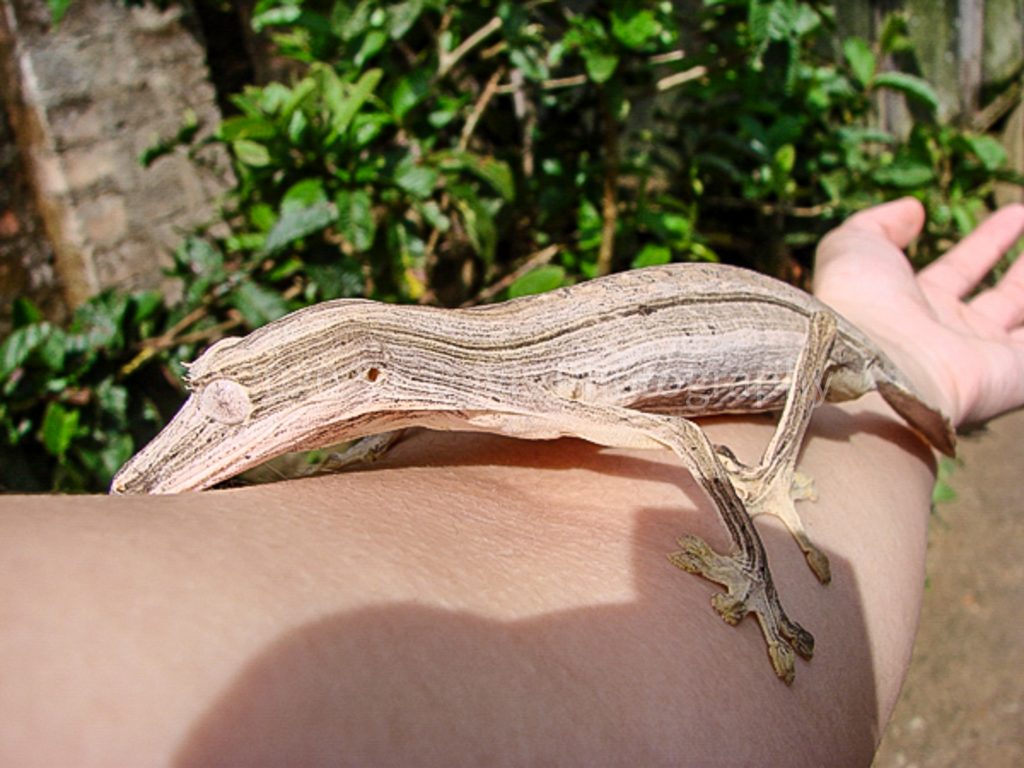
The next species I hold is a Giant Leaf Tailed Gecko, one of the most striking things about this particular gecko, is its marbled eyes. whilst the Madagascan geckos all have unique eyes which are designed to blend in with their bodies and assist with camouflage, this one is particularly striking.
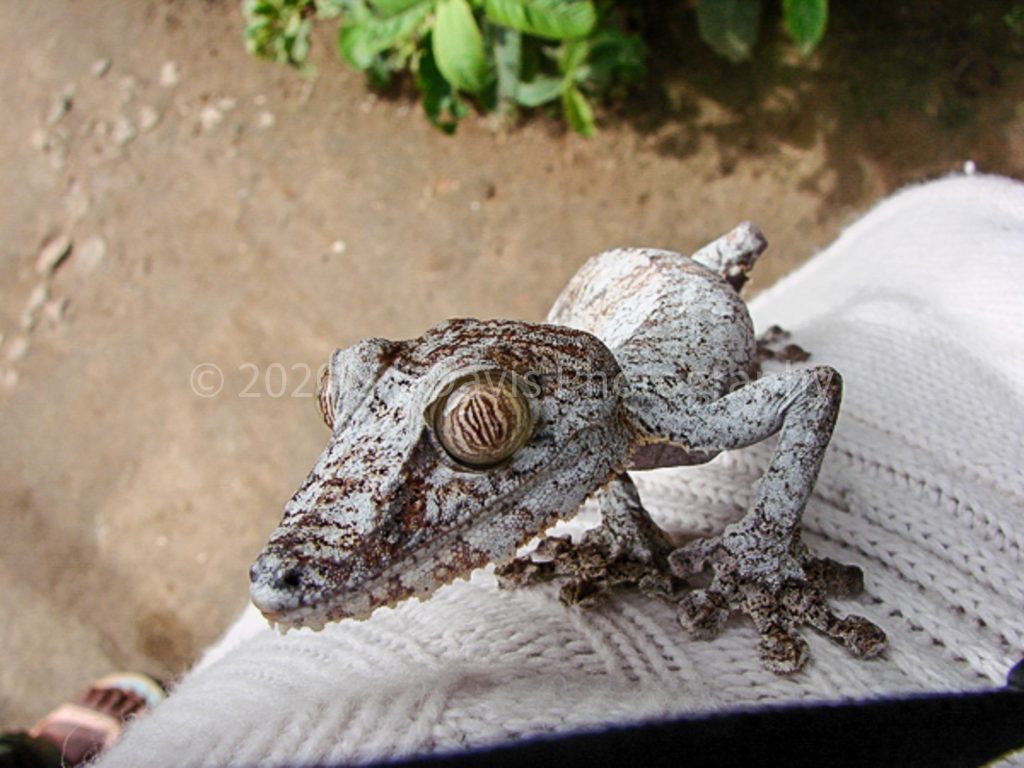
This particular gecko is the biggest species of the genus. Unfortunately, like most species of wildlife in Madagascar, these are now vulnerable due to habitat destruction and loss.
The final species of Gecko is the Mossy Leaf Tailed Gecko. Originally discovered by German zoologist Oskar Boettger but not published until three years after his death in 1910. This gecko gets its name due to the mossy-like camouflage patterns and colours of the lizard’s skin.
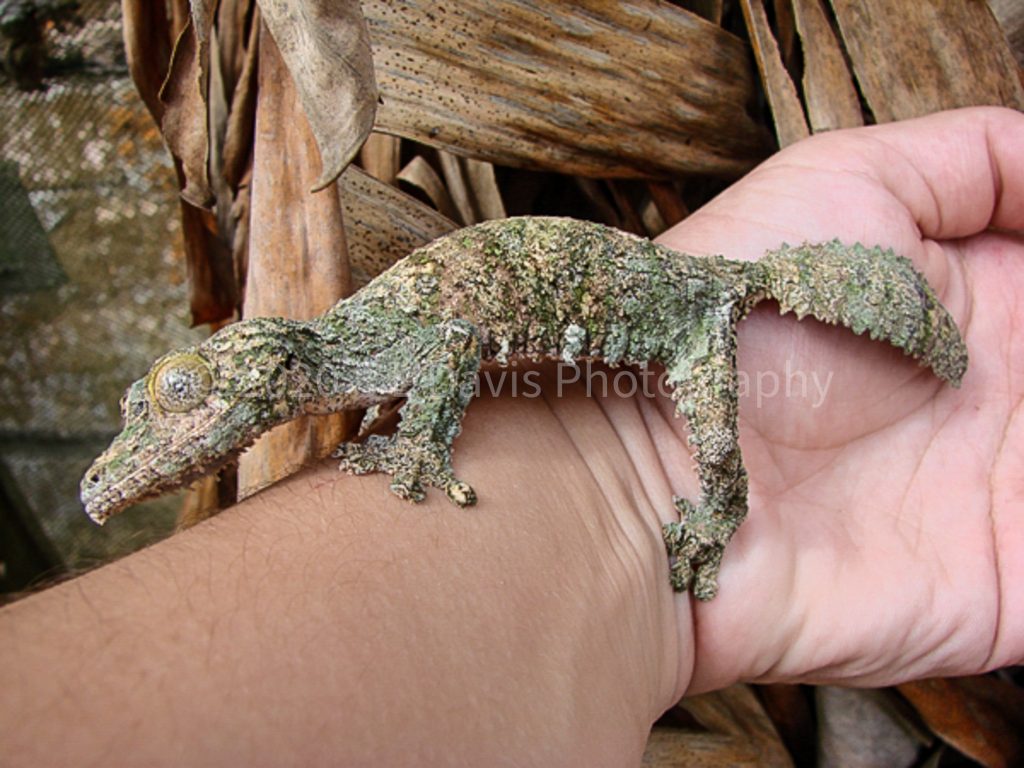
This gecko has flaps of skin, running the length of its body, head and limbs, known as the dermal flap, which it can lay against the tree during the day, scattering shadows, and making its outline practically invisible. Additionally, the gecko has a limited ability to alter its skin colour to match its surroundings.
As I venture on around this conservation park, I am shown what was at this point in 2008 the worlds smallest chameleon. Featured in a David Attenborough documentary at the time, these micro chameleons, are as you can see difficult to spot on a forest floor.
I took the shot of this little one on the palm of my hand and on my index finger to demonstrate the actual scale and size.
This one is a Madagascan dwarf chameleon (Brookesia minima). It was long believed to be the world’s tiniest reptile until a smaller species, Brookesia micra, was described in 2012.

Madagascan dwarf chameleon (Brookesia minima) 
Madagascan dwarf chameleon (Brookesia minima)
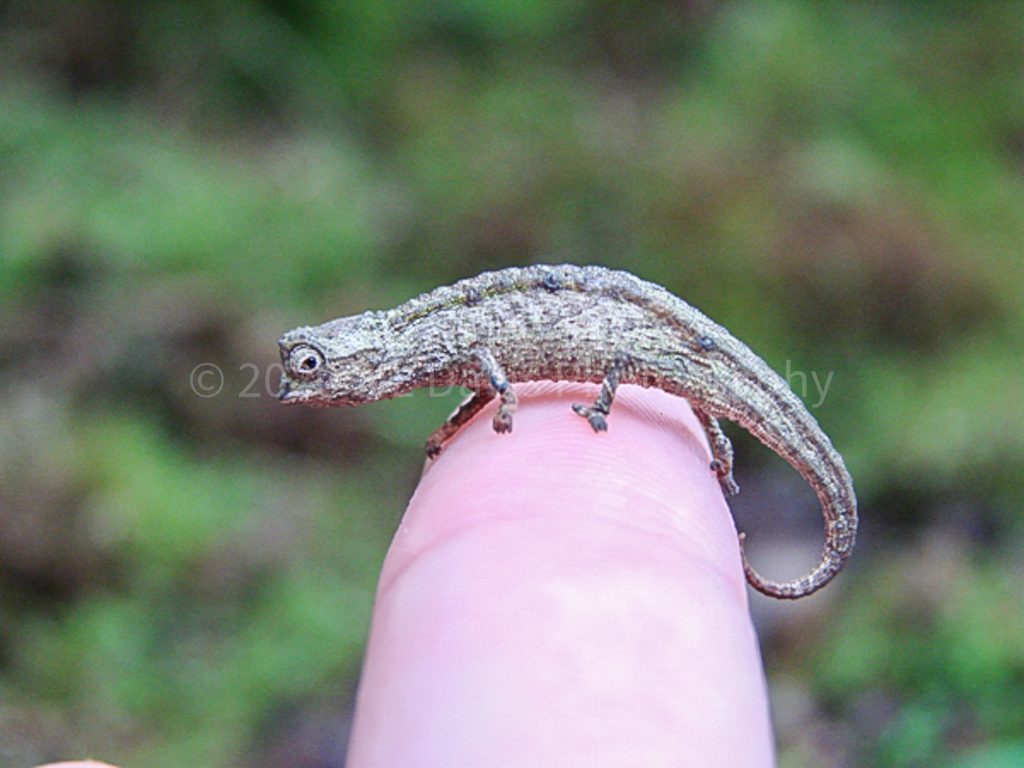
The next three species, unfortunately are nameless. They are believed to be part of the Brookesia family or leaf chameleon.
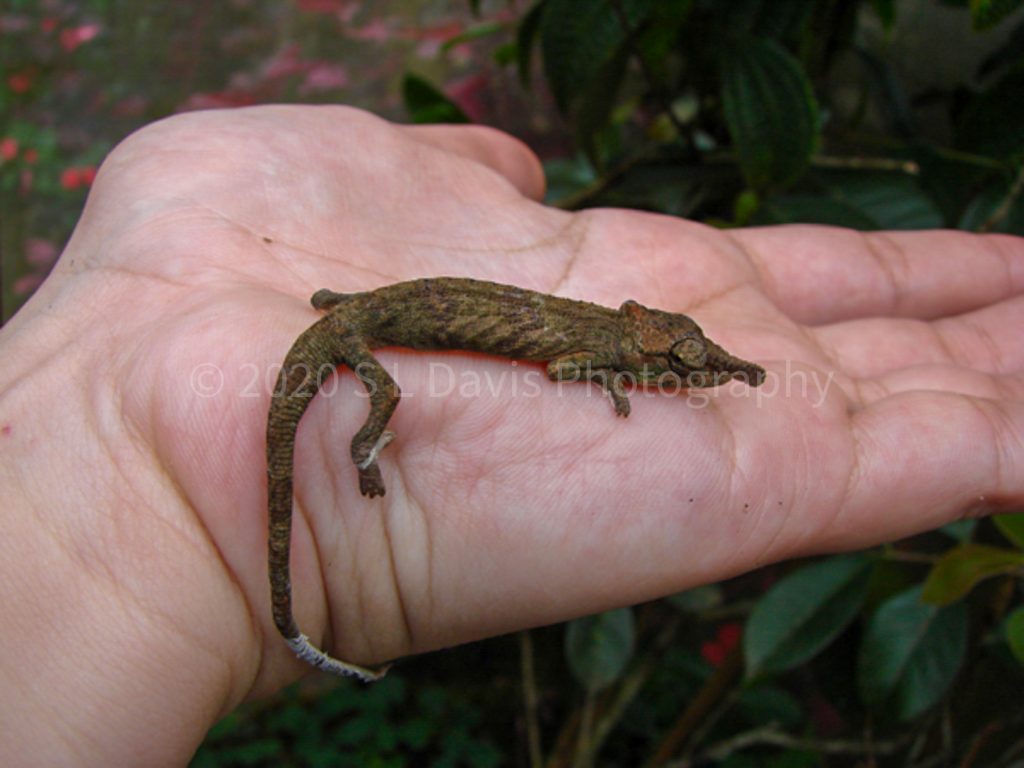
Madagascar also, has several species of stick insects and a rather stunning comet moth.
The Comet moth is also known as moon moth in Madagascar. The female is generally larger than the male. This moth is also one of the largest in the world. It gets its name from its long red ‘tails’. There are a number of moon moths with tails varying in length from mere stubs to long streamers. Biologists now think that those with the longest tails such as this species have evolved more recently than those with shorter tails. The Comet Moth is still fairly common in its native Madagascar.
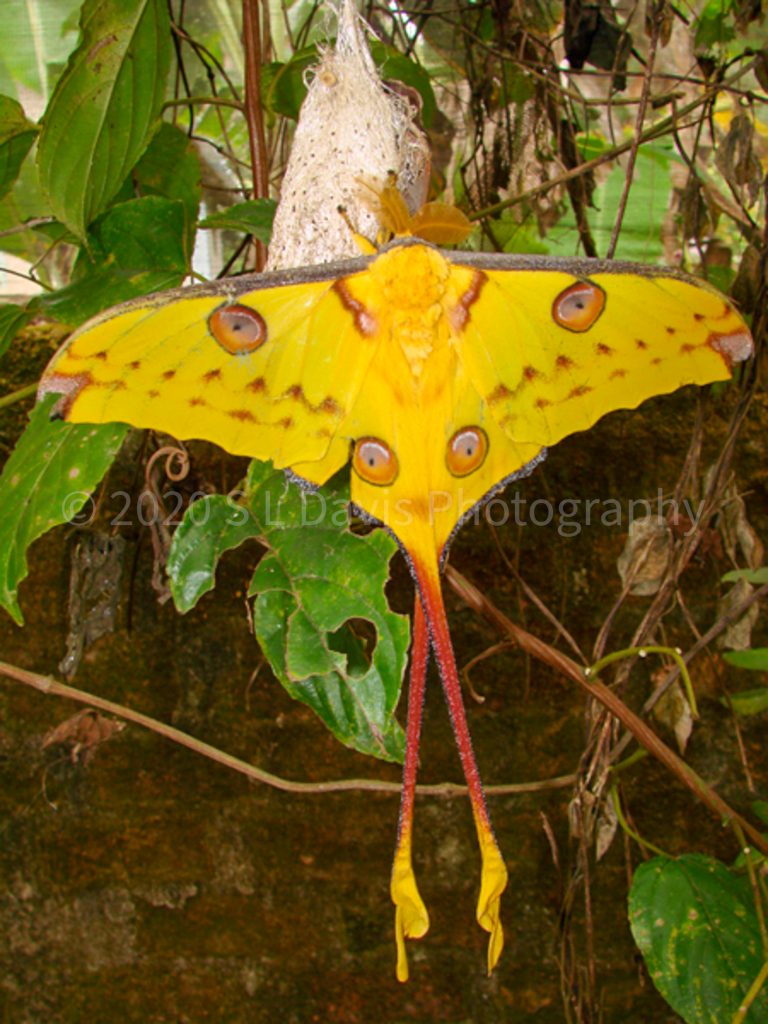
I then head towards a shed to seek out some bats and whilst in there, I come across a very prickly family. I wasn’t guided to this shed by anyone as such. I was actually following what I thought was another species of frog…
You would be forgiven for thinking these are hedgehogs, but they’re not. Because they do resemble hedgehogs, they have also earned the name lesser hedgehog tenrec, which is unfortunate as of the nearly 30 different tenrec species, two of them have the word hedgehog in their name. These are not the same animals; hedgehogs are members of a different order, Erinaceomorpha.
These are in fact Tenrecs. Tenrecs are incredibly diverse and as a result of convergent evolution some resemble hedgehogs, shrews, opossums, rats and or mice. They are known to occupy aquatic, arboreal, terrestrial and fossorial environments.
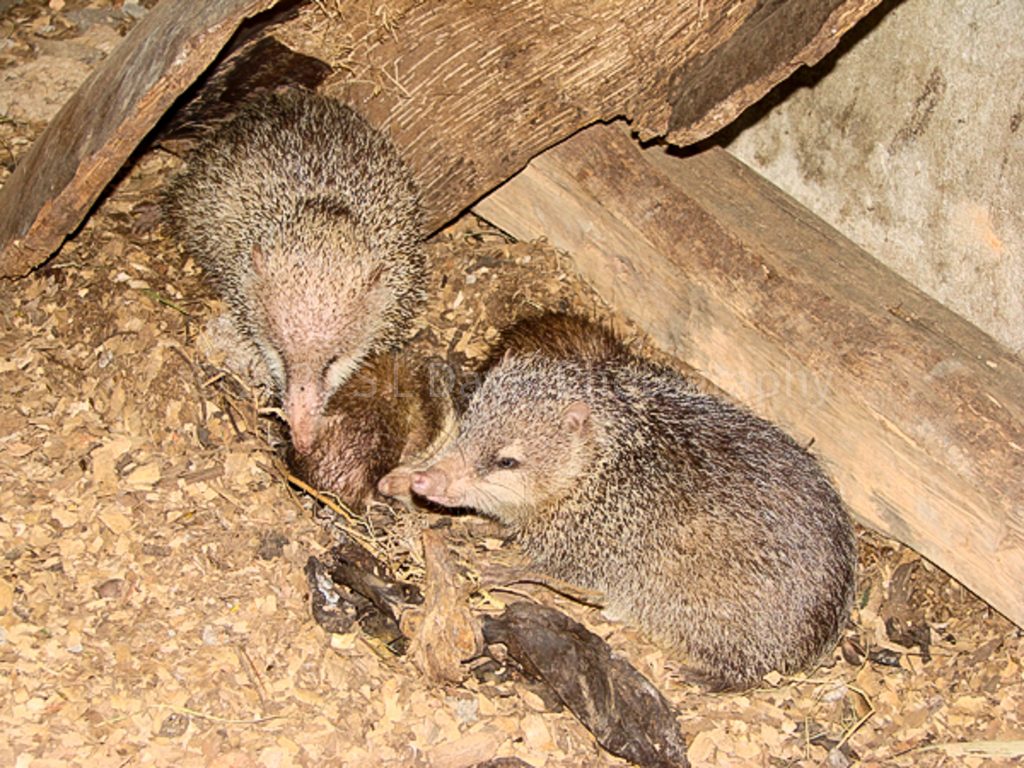
Tenrecs retain a primitive characteristic that were likely widespread in early placental mammals, including a low and variable body temperature. Female tenrecs have a cloaca, which is a single reproductive, intestinal, and urinary opening, unlike most mammals, which have separate openings for each bodily function. (Typically, egg-laying mammals, birds, and reptiles have cloacas, but not placental mammals.)
The tenrec family and their closest relatives, the otter shrews and golden moles, have the greatest diversity of any living family of insectivores. Interestingly, they evolved in isolation, with tenrecs living in Madagascar, otter shrews in west and central Africa, and golden moles in southern Africa.
Walking around still looking for bats, I come across yet another large spider. Unfortunately, I am unable to name this species of spider. What I can tell you is, it was approximately the size of small saucer.
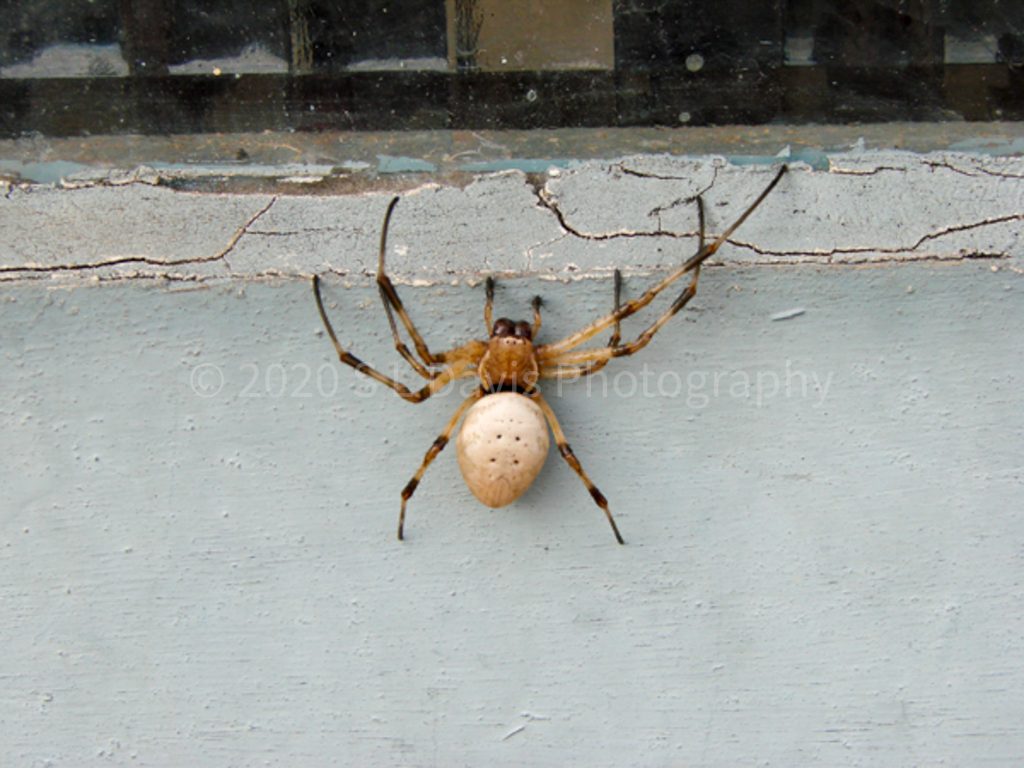
I finally find the bats!!!
This not so great shot is a Madagascan flying fox. It is a species of megabat and it is endangered.
These bats roost during the day in large trees in colonies of up to 1,000 individuals although 400 is a more normal number. These bats are incredibly noisy and are usually found roosting in isolated trees in degraded areas.
Their diet mainly consists of fruit juice which is squeezed from the fruit in the mouth, meaning they will also be known by a general term of “Fruit Bat”. They also eat leaves, flowers and nectar. It has been observed to visit the flowers of the kapok tree Ceiba pentandra and it is believed they may assist to pollinate this tree.
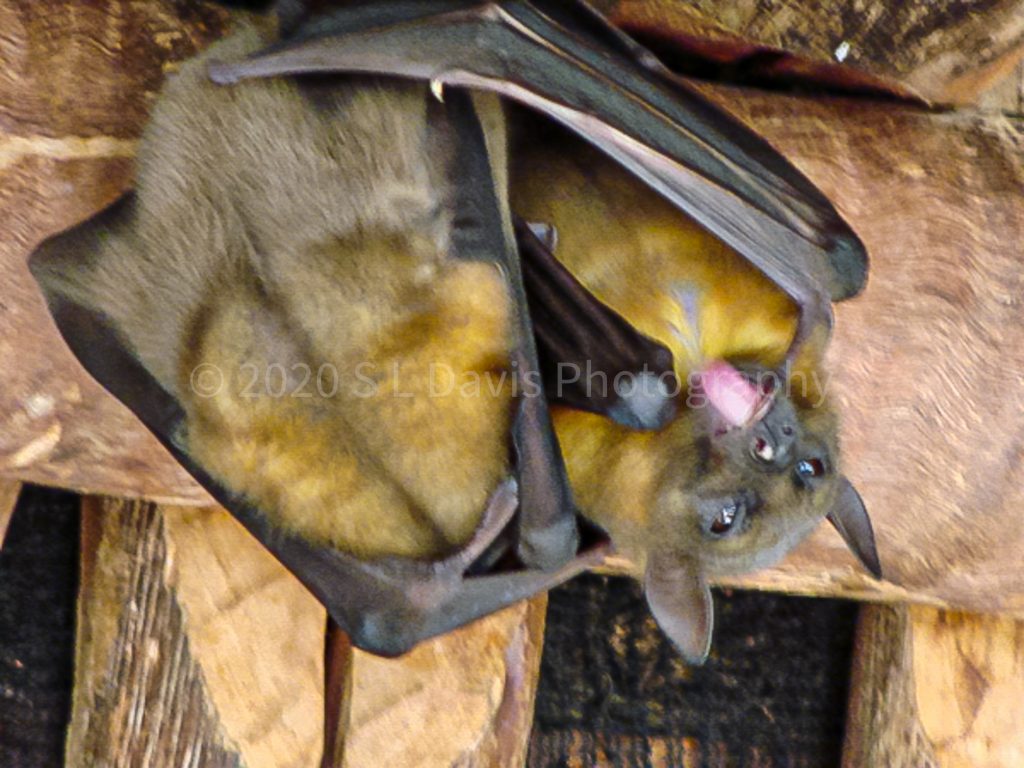
As I waited to be taken to the airport, this local puppy was eager for me to stay and decided upon a tug of war with my camera bag. I did the final photographs including of some of the local children.

My time in Madagascar had now drawn to a close and it was time to fly back to the UK…
I hope you have enjoyed my latest adventure and it has shed some light on this truly wonderful and mysterious island.
Please do leave your thoughts in the comments below under the segment if anything stands out and or feel free to ask any questions or share your experiences…








Those gecko’s and chameleons are amazing! I hope to go back to Madagascar one day and spend so much time with these fascinating animals.
There is a lot to be discovered in Madagascar and you will certainly love it. As I know you are studying to be a biologist, take not of the conservation place I went to as this may be a great starting place for you, when you are finally able to go there.
Hopefully my whole cover of my trip to Madagascar has given you much inspiration.